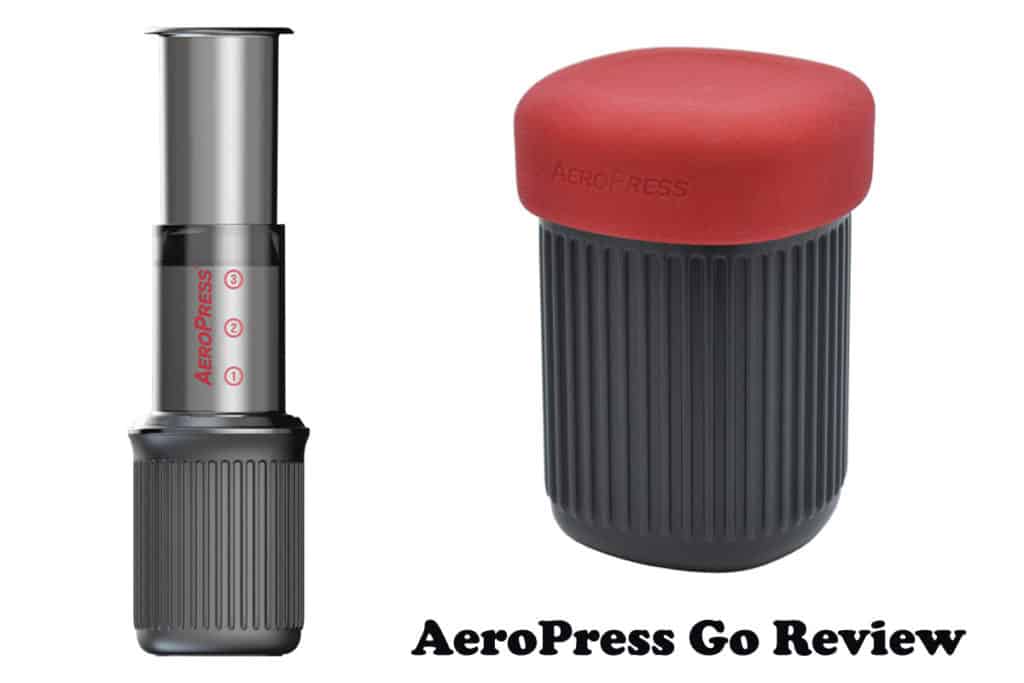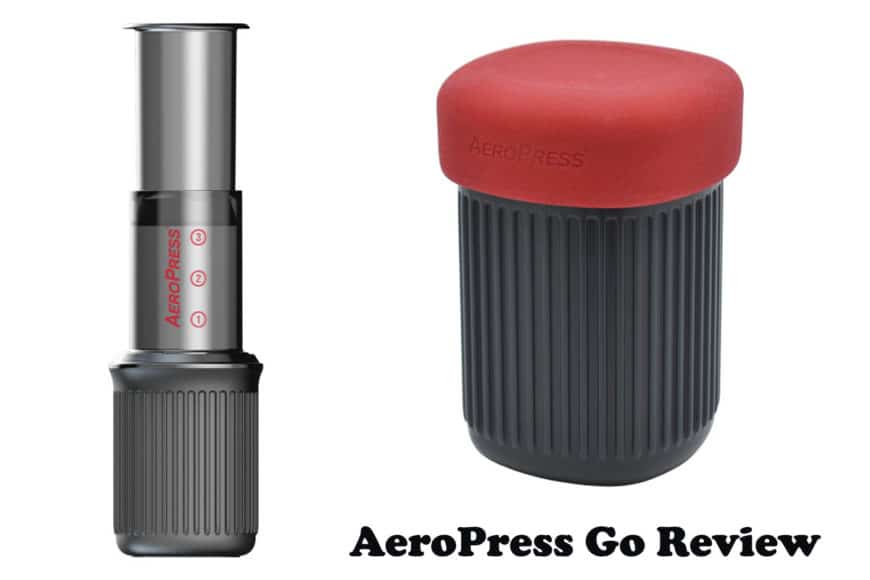
The Aeropress Go is a nice compact system that fits together very well, is easy to carry, makes great coffee and unlike the original, comes with its own cup that doubles as a carrying case.
What is it about the Aeropress Go that lets me make such a claim? How does it really stack up against other types? The answer to these questions and more can be found in the following review of the Aeropress Go.
There are so many different types to consider when looking at a travel coffee maker. Many companies have taken on travel coffee makers and made them their expertise and one of those that you’ve probably heard of is the Aeropress Go.
It is an incredibly popular brand of travel coffee maker but what is it really known for? What makes it unique? Most importantly, what makes the Aeropress Go stand above the rest?
I was eager to find out and give the AeroPress Go a shot, so I stocked up on my favorite coffee and got to brewing my first cup.
Since I have had an original AeroPress, I was pleasantly surprised that the Aeropress Go was almost exactly the same in terms of use. There was no tricky learning curve or anything special to master – I got to brewing without a hitch.
Design
You may be familiar with the traditional AeroPress. If so, you might also be aware of the AeroePress Go is a miniature version of the original table-top coffee maker. The Go is an inch shorter and slightly narrower than the original, which makes it good for travelling but also means that it brews less coffee. It brews 8 ounces instead of 10, which isn’t a huge deal but is worth the mention.
The Go has all of its parts tucked neatly inside of a sturdy gray plastic mug that has a red, rubbery silicone lid. Inside, the mug has a small spoon, a surprisingly useful foldable stir-stick, and a flat makeup-compact style case to hold the necessary filters. All sealed up, I found that it reminded me of the mushroom men from Mario Bros.
Taste
I decided to do a direct taste test using the Go and its predecessor. Both coffees tasted great and I noticed very few differences. However, I did note that the cup of coffee from the Go tasted slightly more acidic. Regardless, the coffee from the Go was just as smooth as you’d expect from AeroPress.
Water Temperature
One of the things I noticed about the AeroPress Go is the way that the machine suggests a water temperature of 175 degrees Fahrenheit. This temperature is notably cooler than water that has just been boiled from the kettle and prompted me to conduct yet another taste test, this time focusing on the effects of water temperature.
I made two cups of coffee: one using the suggested 175-degree water and the other using a 212-degree cup of water. Both cups were pleasing; there was nothing inherently wrong with either of them. Smelling the 175-degree cup, though, I noticed that there was no burnt/smoky smell like there was in the hotter cup.
The biggest difference came in when I started sipping my coffee. As I said, both cups were great, but each reminded me of totally different settings. The 175-degree cup took me to a high-end coffee shop downtown, while the 212-degree cup brought me to somewhere that was fitting with sharp flavors and slightly rough edges.
Brewing Options
There are two ways of brewing with the Aeropress Go. The classic method involves weighing out the beans, grinding them, pouring them into the large brewing chamber, adding hot water, giving it a stir, and plunging. As soon as the water hits the filter, the coffee starts dripping into the mug.
The second method, the “inverted” method, has you pushing the plunger a centimeter into the brewing chamber, turning the entire thing upside down, pouring the water and grounds on top, and stirring. Then, you replace the cap, flip it, and plunge again. Personally, I found a love for the inverted method, as it gave me more control over steeping time.
Either way, the Go’s setup is ideal for allowing users to find their favorite method and stick to it. It’s also great for anyone who enjoys tinkering with their morning brew.
As an example, I use a number-six grind with 22 grams of beans, and water to the second to last line on the inside of the Go, plunge, and add my hot water. Then I top it off with milk to the last line. I have no doubts that if I wanted to switch up my routine I could, which is a huge bonus.
The Verdict: Is the Aeropress Go Travel Friendly?
Regardless of the method you choose to use, I firmly believe that the AeroPress Go is much better for travel then the already amazing original. You can take your original traveling, as there is an included accessory bag, but the Go makes this even easier (I tested this via a weekend work trip).
The style of the cup and lid make it more compact and less clunky. Additionally, the cup and lid make great places to set used accessories in order to keep them off your work surface. Lastly, the Go admittedly looks much better on the cupboard shelf or counter.
As for minor annoyances, there were very few, but still a couple worth noting. For starters, the clever folding stir stick folds down small enough to fit inside of the plunger, but it isn’t as effective as the one that comes with the original.
The silicone lid, which is used to hold the entire thing together securely, makes the contraption a bit wobbly when it’s closed. With a bit of technical redesign, though, that’s an inconvenience that could be solved and as it stands, it isn’t a deal breaker as it doesn’t really affect the usefulness of the product.
Final Thoughts
All in all, my experience with the AeroPress Go was a positive one. The product does its best to provide convenience and quality and seems to do both relatively well. The best part? It’s affordable! No more than the cost of the original AeroPress.


